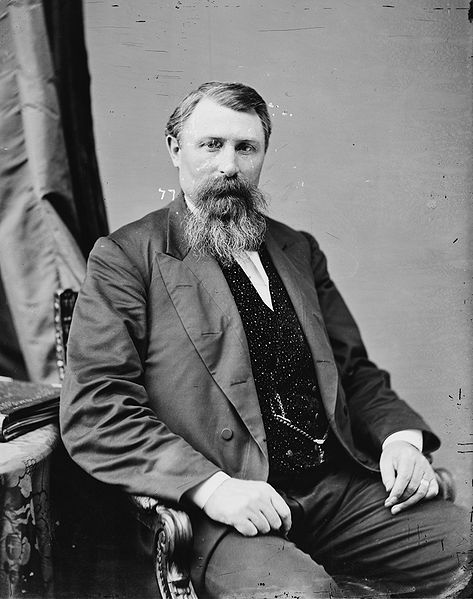Arbeiter-Zeitung (Chicago)
The Arbeiter-Zeitung, also known as the Chicagoer Arbeiter-Zeitung, was a German-language, radical newspaper started in Chicago, Illinois, in 1877 by veterans of the Great Railroad Strike of 1877. It continued publishing through 1931. It was the first working-class newspaper in Chicago to last for a significant period, and sustained itself primarily through reader funding. The reader-owners removed several editors over its run due to disagreements over editorial policies.
The masthead for the May 4, 1886, edition of the Arbeiter-Zeitung, presented as evidence in the trial for the Haymarket affair
Paul Grottkau (1846–1898) was a German-American socialist political activist and newspaper publisher. Grottkau is best remembered as an editor alongside Haymarket affair victim August Spies of the Chicagoer Arbeiter-Zeitung, one of the leading American radical newspapers of the decade of the 1880s. Later moving to Milwaukee, Grottkau became one of the leading luminaries of the socialist movement in Wisconsin.
Radical publisher Paul Grottkau as he appeared c. 1886.
August Spies, Grottkau's editorial colleague on the staff of the Chicagoer Arbeiter-Zeitung and one of the "Haymarket Martyrs" of 1886.
Gov. Jeremiah Rusk, who called out the National Guard on Milwaukee strikers early in May 1886. Grottkau would be imprisoned in the aftermath.
Rolling Mills of the Milwaukee Iron Company at Bay View, objective of strikers involved in the May 1886 Bay View Massacre, a disturbance for which Grottkau was imprisoned.





